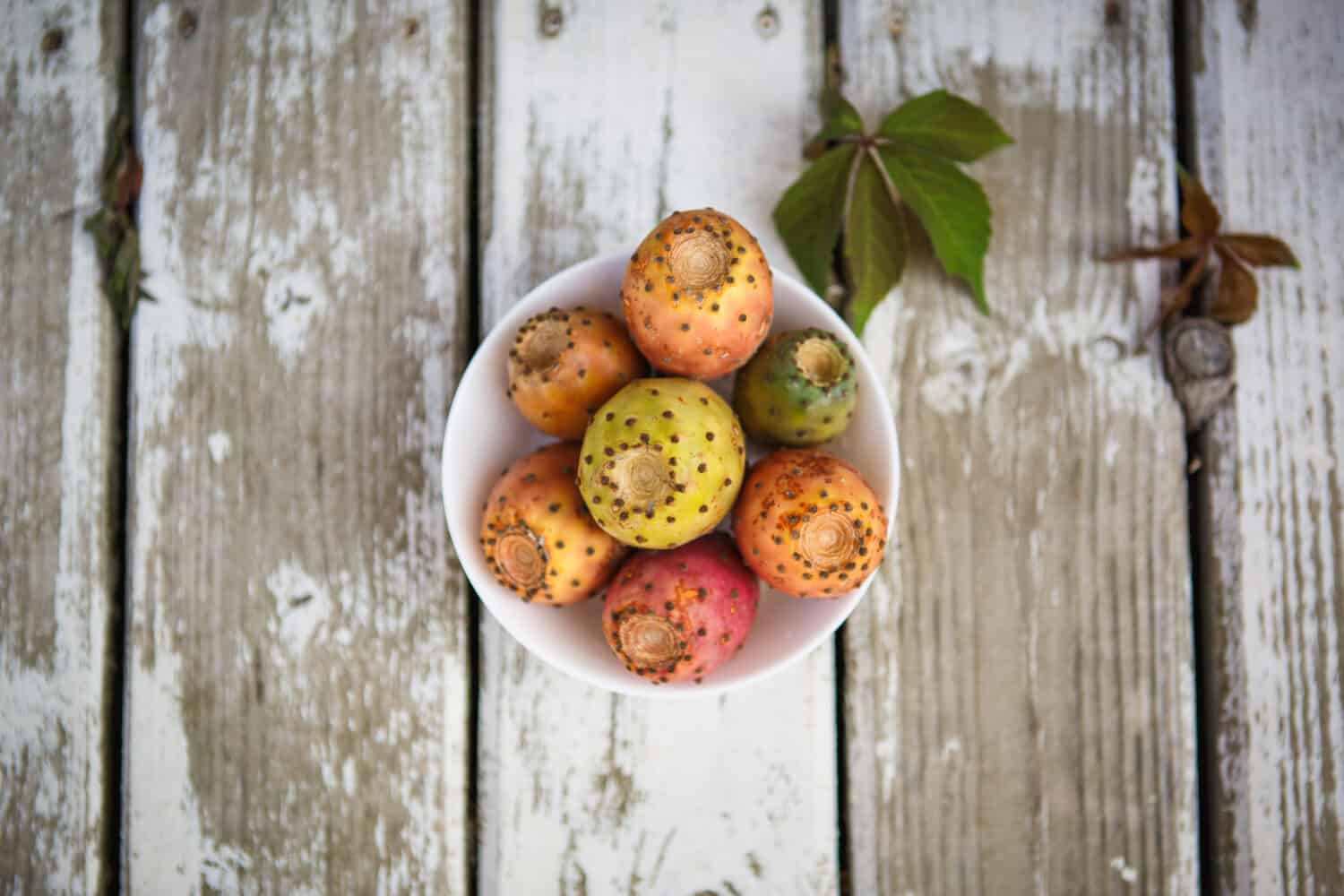

What is Prickly Pear? How to Eat It, Its Flavor, Recipes & Drink Ideas
The prickly pear is known by many names, for instance, sabra, tuna, paddle cactus, Indian fig, mission cactus, and cactus pear. But what is it? We’re exploring more about this fascinating fruit, how it’s used, its health benefits, and beyond. We’ve even included some great recipes and drink ideas, in case you’re feeling inspired!
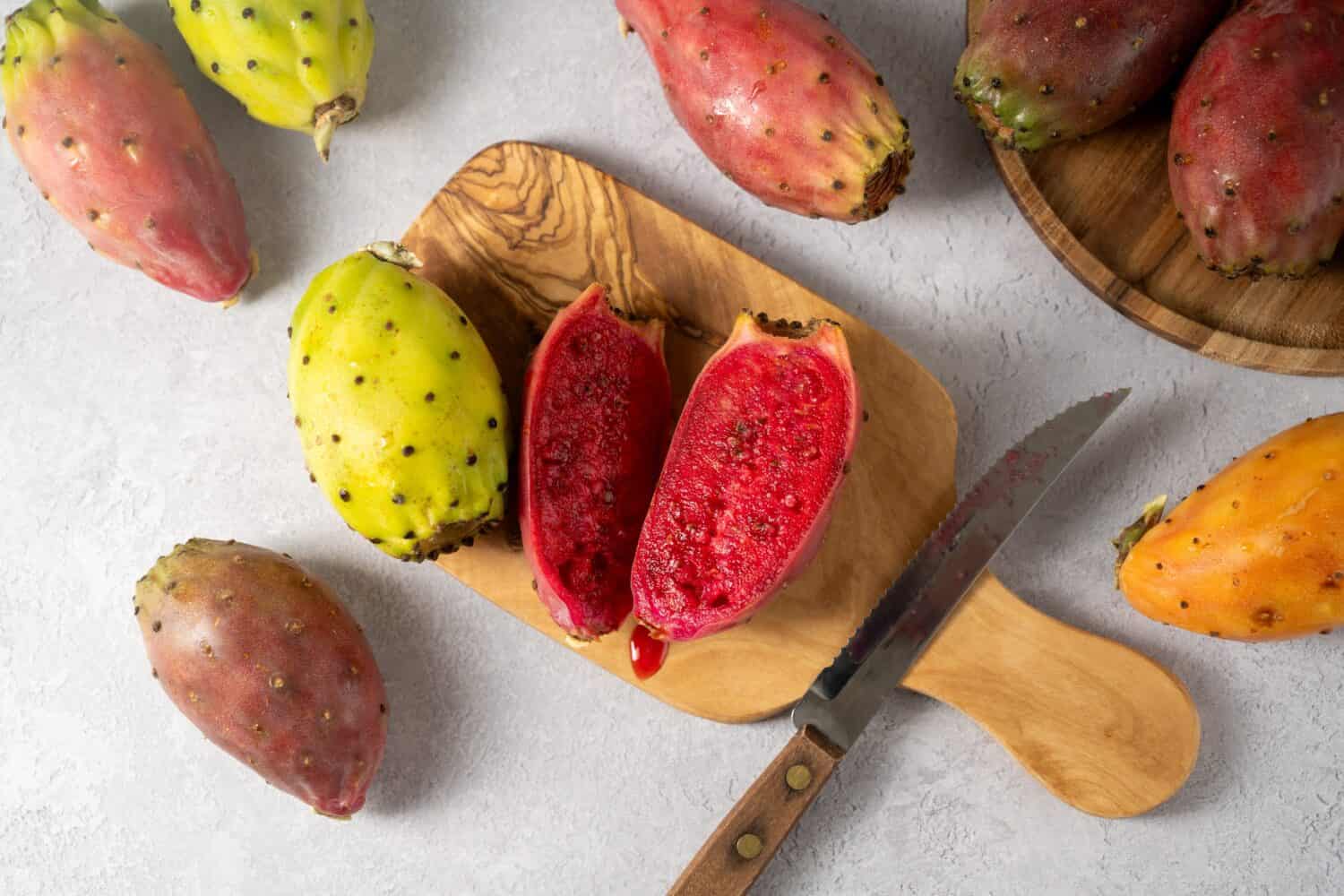
©Erhan Inga/Shutterstock.com
What is Prickly Pear, and Where Does it Come From?
Though it may not be the first visual that comes to mind when you try to picture it, prickly pear is actually a type of sweet, edible cactus fruit. The fruit (also called "tuna") sprouts from the top of nopales, which are the flatter part of the cactus, and can range in color — from green and yellow to pink, red, or even purple. However, the entire plant itself is often called a prickly pear, which can bring about some confusion when you're looking into its culinary uses. Oval in shape, the cactus's leaves resemble paddles — hence, several of its monikers. And, as one might surmise, it has prickly skin as the name suggests. In fact, its body is covered in hair-like spines. (Although the spines aren't poisonous, it's certainly worth gloving up before you work with them!)
The prickly pear-bearing cacti can be found throughout the United States, and, like most species of cactus, it is native to The Americas. With that said, you can find it around the globe, as it has been introduced to many other areas of the world. In particular, Mexico is a prime spot for finding prickly pear, and nopales are frequently used in Mexican cuisine.
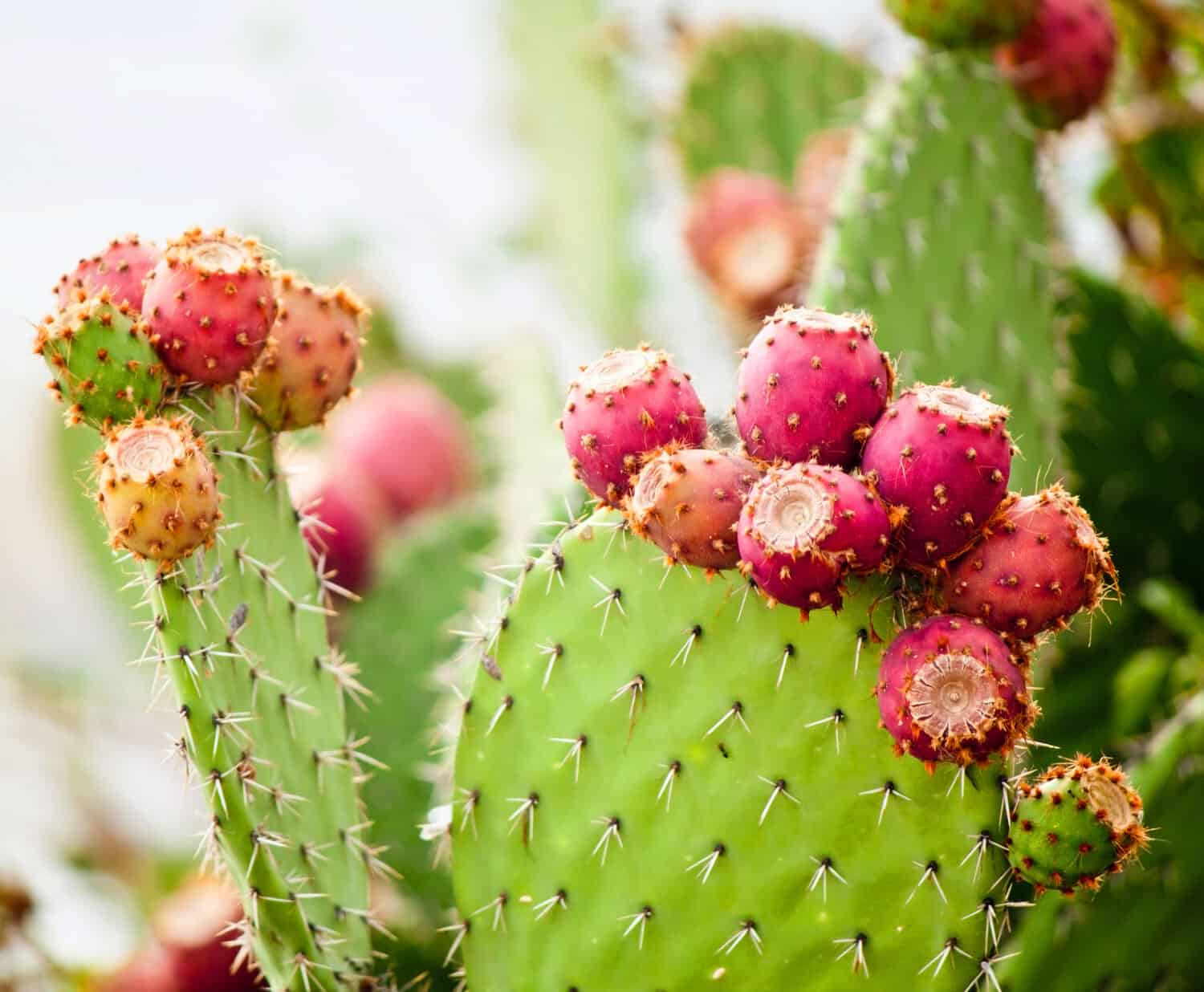
©fischers/Shutterstock.com
What Does Prickly Pear Taste Like, and How Do You Eat It?
A longstanding staple in Mexican cuisine, the prickly pear is highly versatile. In fact, with its slightly tart and citrus-like flavor, it is used in a wide variety of dishes and products — from sweet jams to savory tacos. The prickly pear is also crunchy, which lends it to a few unexpected culinary uses, such as the topping for a salad. With that said, the prickly pear’s texture can sometimes be slimy, depending on how you choose to prepare it.
Somewhat surprisingly, the prickly pear’s flavor has been compared to that of watermelon. It is quite juicy with seeds and can even be eaten raw. But most often, you'll find it boiled down into syrups, candy, and jellies, or cooked into dishes such as soups.
Interestingly, the prickly pear is rich in fiber and antioxidants, so many experts suggest it helps with managing blood sugar, promoting weight loss, and encouraging liver health. Thanks to magnesium, potassium, and calcium, the prickly pear is also thought to help maintain low blood pressure. Believe it or not, they are even used in shampoos and conditioners, as they help to achieve shiny hair! The health benefits of prickly pears actually date back much further than recent studies, however. They have long been used in Mexican folk medicine, treating conditions such as ulcers, liver conditions, and more.

©Simol1407/Shutterstock.com
Important Takeaways:
- The prickly pear has been known to go by many different names, but it all leads to the colorful fruit of a cactus.
- The prickly pear is a longstanding staple in Mexican cuisine and highly versatile, used in both sweet and savory dishes. It can even be eaten raw!
- The prickly pear is native to The Americas but can be found across the globe — particularly in Mexico, where it is a common ingredient in local cuisine.
- The prickly pear's health benefits are thought to include shiny hair, managing blood sugar levels, promoting liver health, maintaining blood pressure, and even aiding in weight loss.
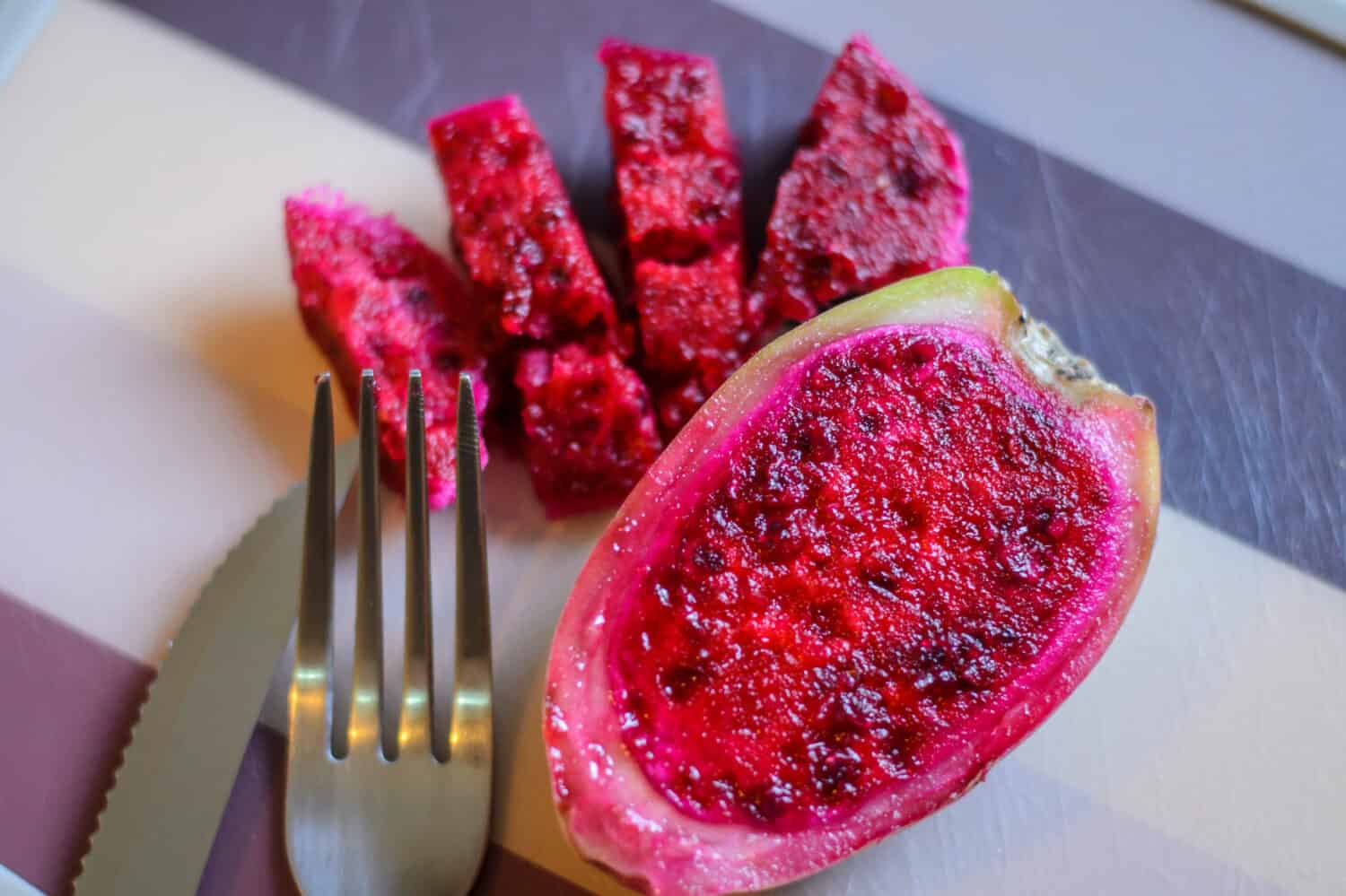
©Tunde Gaspar/Shutterstock.com
Delicious Prickly Pear Recipes to Try
Roast Pork Loin with Prickly Pear Glaze
Vibrant in color, this beautiful glaze is the perfect accompaniment for pork loin, adding a sweet coating to the savory protein. Just make sure you handle the prickly pears with care as you peel them for your sauce. They truly are prickly!
Prickly Pear Barbecue Sauce
This particular recipe involves generously coating doves with prickly pear barbecue sauce. While doves may not be in most of our cooking repertoires, the sauce is the key here, and it easily lends itself to other proteins such as chicken, quail, and cornish game hen. The recipe even calls for a few other authentic Mexican ingredients that top our favorites list — agave and mezcal.
Prickly Pear Salad Dressing
You can certainly top your salad with raw prickly pear, but it's also ideal to infuse into salad dressings!
Prickly Pear Lemon Bars
If you're searching for a Southwest-themed dessert (or simply one that tastes as wonderful as it looks), these prickly pear lemon bars are worth a try. A delicious homemade crust is covered in prickly pear-infused custard and then topped with a dusting of confectioner's sugar.
Prickly Pear Drink Ideas
There are a plethora of fruit-forward (and mighty delicious) prickly pear beverage recipes out there! From sparkling lemonade to a margarita, we snagged a few to inspire you.
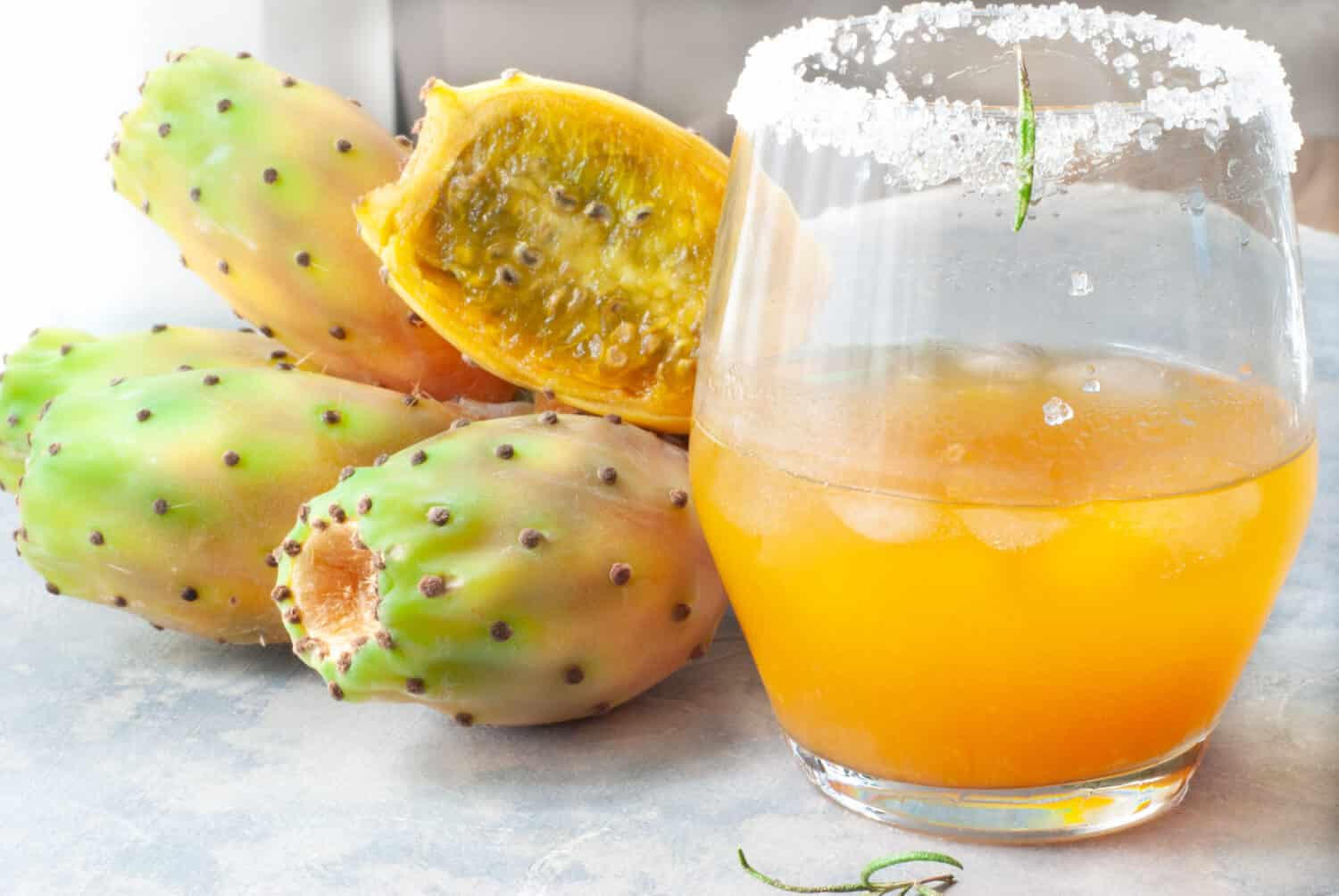
©Nastassia Diler/Shutterstock.com
Sparkling Prickly Pear Juice Lemonade
This non-alcoholic beverage is fun, festive, and perfect for the whole family. It's also vegan, gluten-free, and only requires three ingredients apart from the prickly pear syrup!
Prickly Pear Spritz
Spritz fans, rejoice. With lime juice, prosecco, and tequila, this refreshing cocktail is perfect for summer days spent on the patio or by the pool.
Prickly Pear Margarita
What could possibly pair better with prickly pear than tequila? This might be a match made in heaven.
Prickly Pear Smoothie
If you're a smoothie lover, this is an easy way to incorporate prickly pear into your recipe roster. Combined with other tropical flavors such as banana and pineapple, the prickly pear offers up a vivid glass with health benefits and an exotic twist.